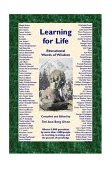

 I took the one less traveled by, And that has made all the difference.” by Robert Frost, “The Road Not Taken”
Robert Frost: The Farmer-PoetRobert Frost (1874-1963) was one of America’s most beloved 20th century poets. In fact, he was recognized as a leading poet even in his own lifetime. This is probably because his poems are easy to read and understand. Frost often said, “The real meaning is the most obvious meaning.” Frost used traditional verse forms but modernized the interplay of rhythm and meter to write more like the way people speak. In addition, much of his poetry contemplates simple subjects while invoking pleasant imagery of pastoral scenes from nature and the outdoors. Frost’s two most popular poems are “Stopping by Woods on a Snowy Evening” and “The Road Not Taken” (my personal favorite). Some of his other famous works include: “Fire and Ice,” “Nothing Gold Can Stay,” “Birches,” “After Apple-Picking,” and “Mending Wall.” Frost’s love for the New England countryside is reflected in his poems, which were also influenced by his farming experiences. Frost spent much of his childhood and adult life living on rural farms in Massachusetts, Vermont, and New Hampshire. His family had been New Englanders since the 1600’s. Frost’s father, William Prescott Frost, Jr., was a descendant of colonist Nicholas Frost from England who had sailed to New Hampshire in 1634. Their family’s longtime farming tradition was broken, however, when William Frost Jr. attended Harvard where he took to freethinking and as a result revolted against his puritanical heritage. After marrying Isabelle Moodie, William Frost Jr. went in search of a more adventurous life as a journalist in San Francisco. This is where Robert Frost was born on March 26, 1874. His full name was Robert E. Lee Frost, after the Confederate general. (Although Robert’s father came from Yankee territory, he sympathized with the South during the Civil War.) Robert was a nervous child and did not take well to public school (he only lasted for one day in kindergarten), so he was educated at home. His mother read to him from the Bible, as well as Greek and Latin classics. She told him the myths, tales and legends of her Scottish homeland. Isabelle also read aloud works by noted authors such as Poe and Wordsworth. Thus, it was Robert’s mother who first instilled in him the knowledge and inspiration for his future career as a poet. From an early age, Robert liked playing with words and the art of language. Before long he was memorizing poetry and reading books on his own. He even read Shakespeare for fun, although Emerson was his favorite author. Robert’s father died in 1885, after which 11-year-old Robert, along with his mother and little sister Jeanie, traveled by train back to New England. Isabelle Frost supported her family by taking a job as a schoolteacher, which allowed her to continue teaching her own children. She taught the fifth to eighth grades in a small school, and both Robert and Jeanie were in Mrs. Frost's class. Robert then went on to Lawrence High School, where he was editor of the “High School Bulletin” and published his first poem. After graduating at the head of his class in 1891, Frost attended Dartmouth College for one semester and attended Harvard for two years, but often interrupted his studies to work on the farm or assist his mother at school. He also worked as a newspaper reporter and editor, but believed his true calling was as a poet. In 1895, Robert married Elinor, his high school sweetheart and co-valedictorian of the graduating class. Along with Frost’s mother, they earned their living by teaching at a local private school. Following the deaths of their first child of cholera and Robert’s mother Isabelle of cancer, the couple returned to farming in 1900 when they inherited his grandfather’s farm. Robert and his wife had five more children (one of whom died at two days old). The Frosts taught their children at home on the farm. Robert Frost emphasized real-life learning and believed that education should both delight and instruct. His educational approach favored involvement and enjoyment rather than scholarship and criticism. Robert worked on the farm during the day and wrote poetry at night but neither was very profitable. With growing family obligations, Frost once again began teaching at a nearby academy in 1906. Then he sold the farm in 1912, and the Frost family moved to England where they lived for almost three years. While in England, Robert Frost met numerous literary figures including Ezra Pound and William Butler Yeats. He published his first two books of poetry and finally made a name for himself. But with the outbreak of World War I in 1914, the Frost family decided to return to the states. Upon arriving back home, Frost discovered that his critical acclaim had followed him across the Atlantic. From then on, Frost’s poetry was more appreciated in America than in England, the country which gave him his start. Although his literary success meant that Frost was now free to live off the publication of his papers and books while teaching and lecturing at various colleges, Frost preferred living in farmhouses and always kept a farm. The family settled in Vermont where they stayed for the next twenty years. Even later in life when Frost left Vermont to live near the colleges in Boston and Amherst where he lectured, he still kept a farm as a summer residence. Ezra Pound wrote of Frost: “I know more of farm life than I did before I had read his poems. That means I know more of Life.” Ironically at the peak of his writing career, Frost endured a terrible decade of family tragedies. In 1934 his youngest child, Marjorie, died after giving birth to her first baby. Another one of Frost’s daughters, Lesley, married a man who was unfaithful and she had a nervous breakdown. Yet another daughter, Irma, suffered from a mental disorder and was placed in an asylum. In 1938 his wife Elinor died of a heart attack. Then his son Carol committed suicide in 1940. Consequently, Frost’s later poems have a darker tone. Robert Frost received numerous academic, literary, and public honors and also won the Pulitzer Prize four times (in 1924, 1931, 1937, and 1943). Frost spent the latter part of his life reading his poetry in front of audiences. He was even invited to read one of his poems (“The Gift Outright”) at President John F. Kennedy’s inauguration ceremony in 1961. The following year, Frost traveled to the Soviet Union as part of a diplomatic exchange, where he met the prime leader Khrushchev. By the 1920’s, Frost had become one of the most celebrated poets in America. Even though his poetry focuses on the character and landscape of New England, his themes are universally appealing. While he used traditional English meters, it was Frost’s conversational tone that brought his words to life. This made his work endure even after his death in 1963. Today, he is known as one of America's greatest poets. For more information on Robert Frost, check out these books and links:
Robert Frost: Teacher, by Nancy Vogel. (An overview of Frost’s philosophy of education.)
Stopping by Woods on a Snowy Evening, illustrated by Susan Jeffers. (A beautiful picture book rendition of Frost’s famous poem.) Robert Frost (Poetry For Young People series), edited by Gary D. Schmidt. (Twenty-nine of Frost's poems, arranged by season, illustrated by Henri Sorensen. It does NOT include “Stopping by Woods on a Snowy Evening.”)
www.lifetimebooksandgifts.com/ltt_frost.html
Contact: . Thanks! Please click here for reprint permission.


These pages are a continuous work in progress.
|
Help Support this Site
and purchase items via our affiliate links. Thank you!
 
Thank you for visiting my |

